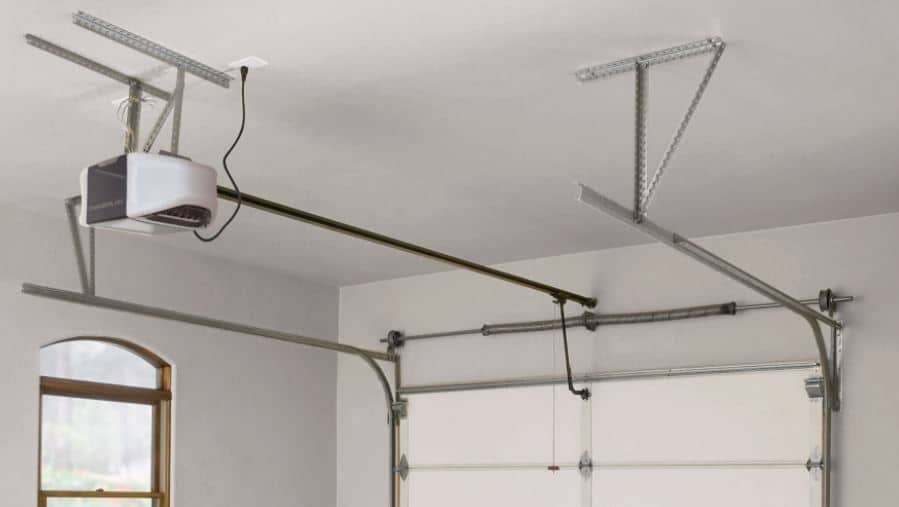How Does A Garage Door Opener Work? door openers have become an essential part of our daily lives, providing convenience and security as we come and go from our homes. Most of us use them regularly, but have you ever wondered how these remarkable devices work? In this article, we will delve into the inner workings of garage door openers, shedding light on the technology that makes it all possible.

Understanding the Basics
At first glance, a garage door opener might appear to be a simple device, but its operation involves several key components working in harmony. These components include a motor, a drive mechanism, a remote control, and sensors.
The Motor: The Heart of the System
The motor is the central component of a garage door opener. It’s responsible for lifting and lowering the garage door. Most modern garage door openers use electric motors. These motors are typically powered by alternating current (AC) or direct current (DC). The choice between AC and DC motors depends on the specific model and manufacturer. AC motors are known for their reliability and strength, while DC motors tend to be quieter and more energy-efficient.
The Drive Mechanism: Turning Motor Power into Motion
Once the motor receives a signal to open or close the garage door, it needs a way to translate that power into motion. This is where the drive mechanism comes into play. There are three main types of drive mechanisms commonly used in garage door openers:
- Chain Drive: This is the most common and affordable option. It uses a chain to pull or push the garage door along a track. Chain drives are durable but can be noisy.
- Belt Drive: Belt-driven openers use a rubber or rubber-like belt to move the door. They are quieter than chain drives and are a popular choice for homes with living spaces above or adjacent to the garage.
- Screw Drive: Screw drive openers use a threaded steel rod to move the door. They are known for their simplicity and reliability.
Remote Control: Your Key to Convenience
One of the most convenient aspects of a garage door opener is the remote control. The remote allows you to open or close the garage door without having to leave your car. When you press the button on the remote, it sends a signal to the garage door opener, telling it to activate the motor and operate the door.
Modern garage door openers often come with advanced remote control features, such as the ability to control multiple doors, control the opener from your smartphone, or even integrate it with your home automation system. These advancements have made garage door openers more user-friendly and secure.
Safety Sensors: Protecting Your Loved Ones
Safety is a top priority when it comes to garage door openers. Most openers have safety sensors to prevent accidents and injuries. Typically, people mount these sensors on both sides of the garage door near the bottom. They emit an invisible beam of light. If something, or someone, interrupts the beam while the door is closing, the sensors will instruct the opener to stop and reverse the door’s motion. This feature protects pets, children, and belongings from trapping or injury by a closing door.
In addition to safety sensors, many modern garage door openers include features like rolling code technology, which changes the access code every time the door is operated. This makes it extremely difficult for potential intruders to gain access to your garage.
Conclusion
Garage door openers have come a long way from their humble beginnings. Today, they offer a blend of convenience, security, and advanced technology. The motor, drive mechanism, remote control, and safety sensors work together to make our lives easier and safer. As technology continues to evolve, we can expect even more innovations in garage door opener design, further improving the way we interact with our homes.
The next time you press your garage door opener, appreciate its engineering marvel. Understanding its operation boosts your appreciation and ensures long-term maintenance.
In conclusion, garage door openers have become an integral part of modern living, offering a blend of convenience and security that we often take for granted. Understanding how these devices work, from the motor and drive mechanism to the remote control and safety sensors, can help us appreciate the technology behind this everyday convenience. As technology continues to advance, we can expect even more sophisticated and user-friendly garage door openers in the future.



Leave a Reply